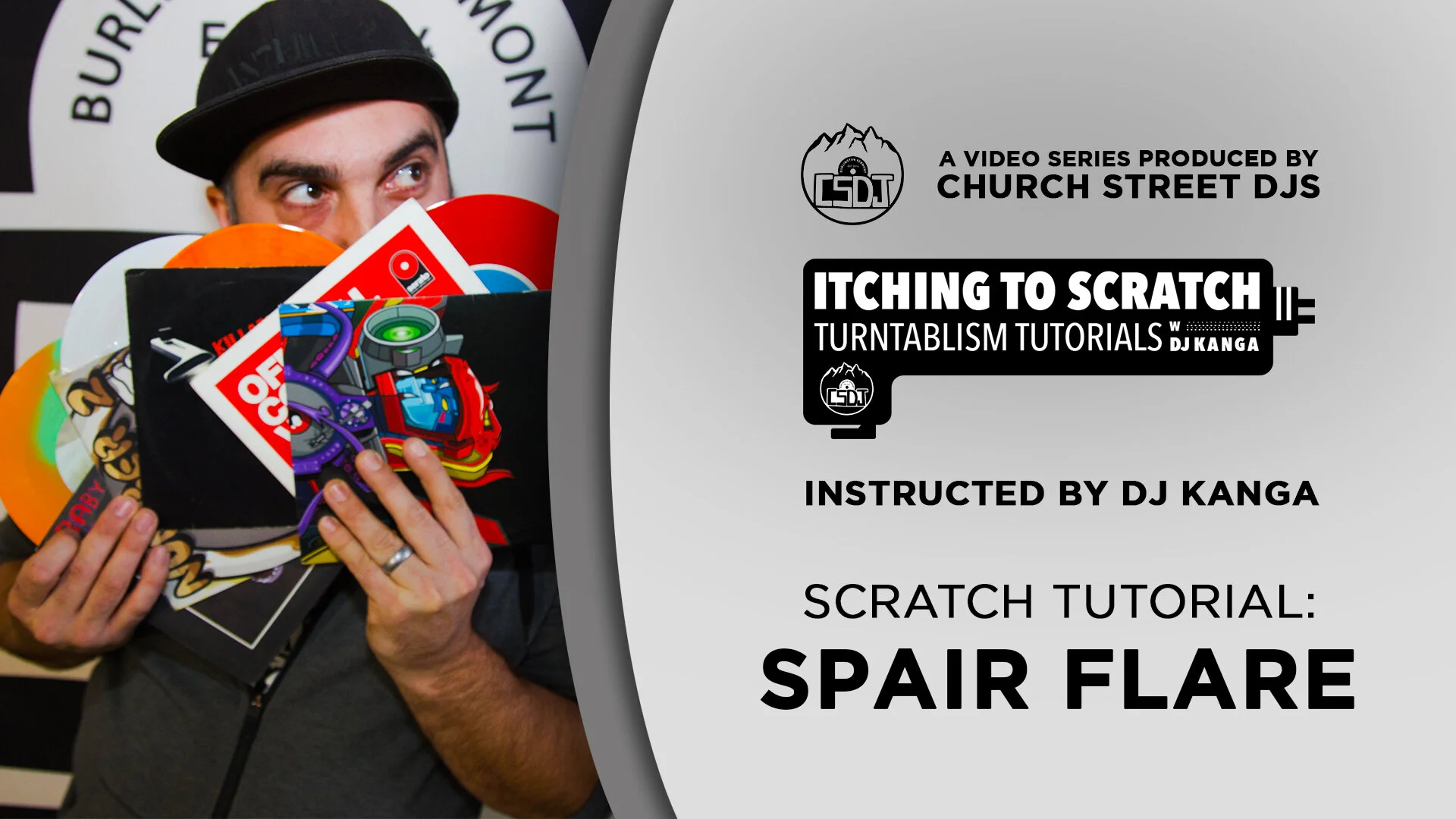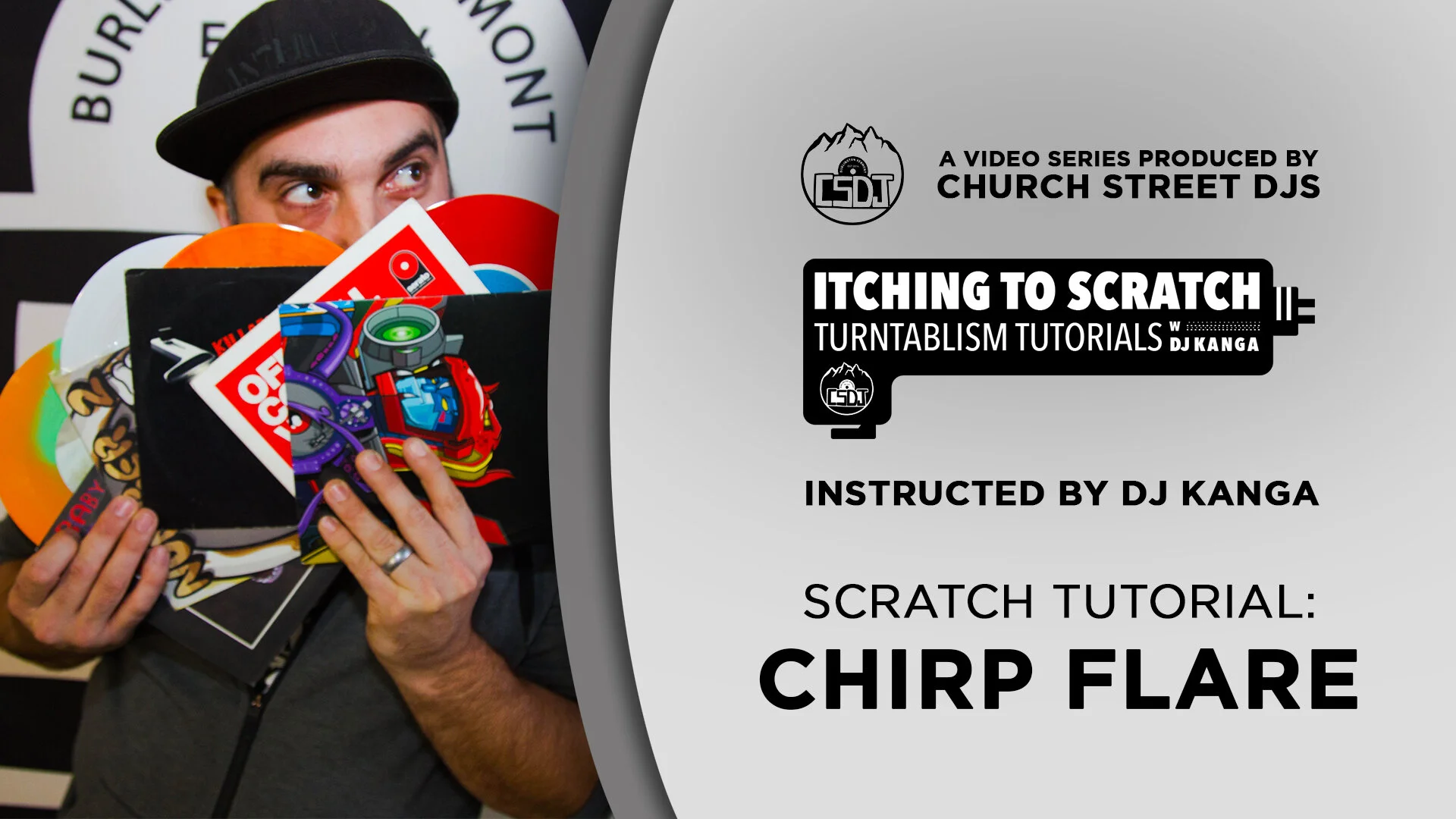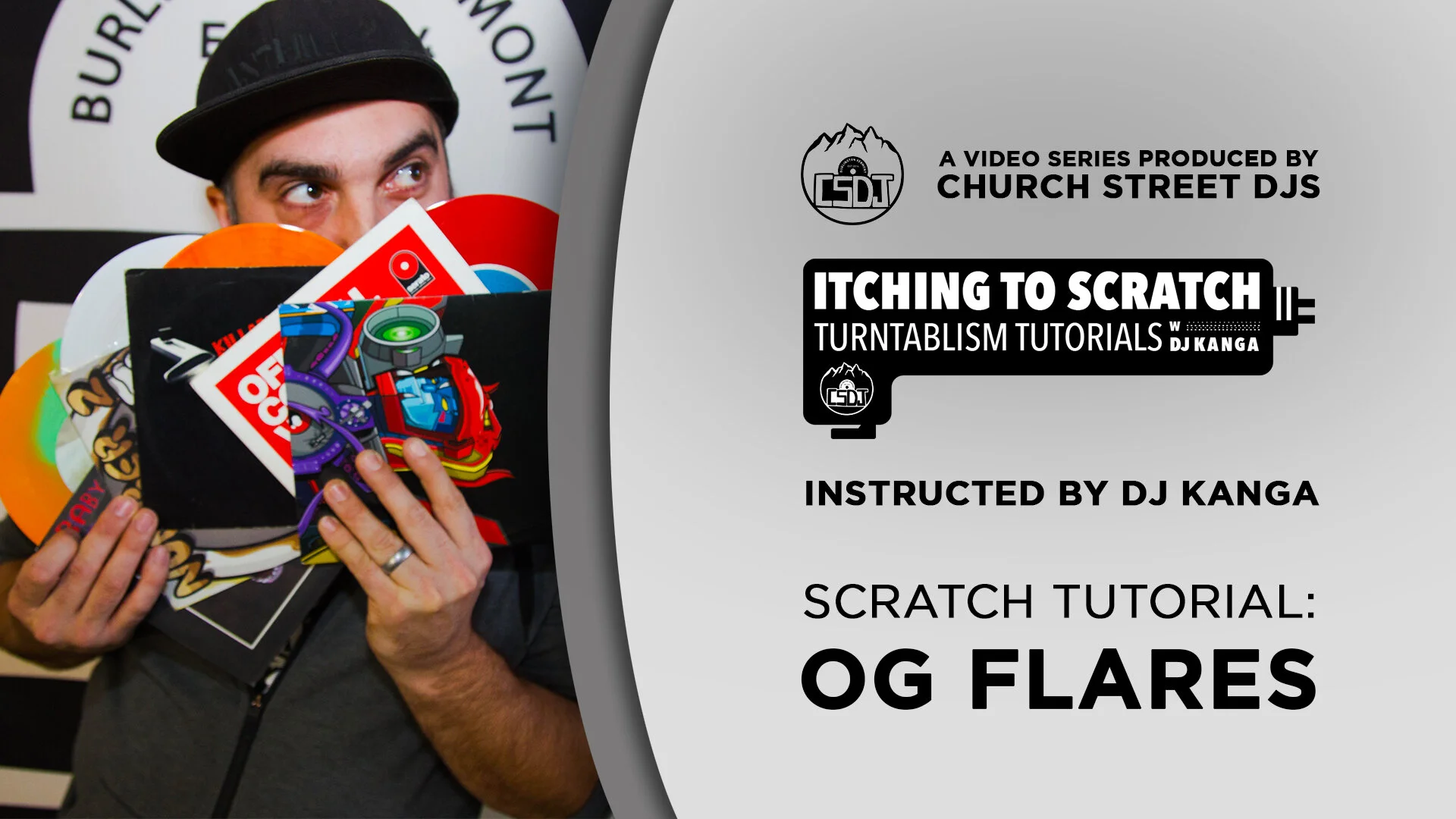Spair Flare was made famous by DJ Spair. This pattern sounds a lot faster than it really is. The Spair Flare is executed by adding a small baby scratch to the beginning of a 1 Click Flare. The objective is to have a quick and small enough baby before your 1 Click Flare that shouldn’t affect the timing of your flare but create 2 extra notes, 6 in total.
Week 32: Chirp Flare
The chirp flare was invented by D-Styles. It is a more nuanced way of doing Spair Flares and takes an extra crossfader movement but the sound achieved is much sharper. As the name states, the scratch is executed by performing a chirp immediately followed by a 1 click flare. The trick to achieving the right sound is to make a short chirp followed by a long 1 click flare. Makes 6 notes in total. Also called a “squeeze scratch”.
Week 33: Navigate Your Record (part 1)
DJs and turntablists read a record like a clock. They do this by putting a mark, sticker, or some other indicator on the middle label portion of the record. As the record spins around, the DJ can listen to the samples playing while viewing the mark on the record, creating a visual reference point for where the various samples begin and end.
Week 34: OG Flare
Originated by D-Styles, the OG Flare scratch is our first “two click” fader scratch. This fader movement of doing two fast clicks in repetition will be the basis for many scratches to follow. Starting with the fader open, push the record forward and make one click at the end of the sound, just like you would for a chirp. On the back stroke, perform the same movement as a 1 click flare, chopping the sound in half with one click. Makes 3 notes.
Week 35: 2 Click Flare/Orbit
Week 36: Baby Orbit
Week 37: OG 2 Click Combo
Week 38: Aquaman
The Aquaman scratch is a more spaced-out, accented version of Boomerangs, which we’ll learn next. Start with the crossfader closed and perform a Slice to a forward, ending with the fader closed. Now repeat the same movements except reversed; Reverse slice to reverse pull, ending with the fader closed. The slices, both forward and reverse, should be quicker and shorter than the release/forward and reverse pull in order to achieve the proper timing.









